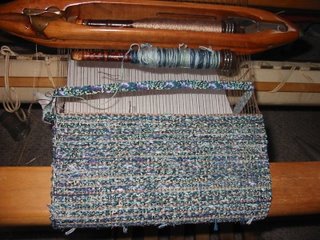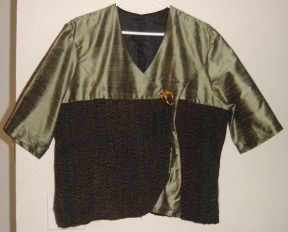Last week I subbed in a 3rd grade class. This was a pre-arranged two day assignment. I love multi-day assignments because it allows me to plan ahead a fiber project for the kids. This time the kids overdyed light brown wool with food coloring. Educationally, it was a science experiment, in case the principal came in wanting to know how food coloring and wool were related to the students' instructional time. The presentation only took about 10 minutes. Putting fiber into their cup took about 20 minutes.
First, we talked about different foods that can cause stains. Putting this in the context of "has your mother ever gotten upset that you got strawberries/hot chocolate/juice/ketchup/mustard/etc... on your clothes?" we talked about natural dyes (strawberries, chocolate, mustard), fiber types (cotton, wool, synthetic) and the process of staining, aka dyeing.
Next, each student was given a strip of light brown wool roving about 12 inches in length. We used Wilton's gel cake decorating colors, which sadly I've recently learned is not light-fast but it served its purpose for this experiment. Each student picked a color. In cases where more than one student picked a color, we made an effort to make different strength solutions to get light and dark shades. Note: Ahead of time I made a list of possible colors on the board limiting the number of students per color lest we have all the boys pick blue and all the girls pick violet.
We put water, a glug of white vinegar, and some of the Wilton's gel into cups. The kids put their roving into the cup, use a spoon to submerge it (we didn't pre-wet the fiber) and place the cup in the sunny windowsill. My intention was to dye this using a modified "sun tea" method. Unfortunately, the sun wasn't cooperating. I knew by the end of the day that I had to speed up the process. I made use of the microwave in the teacher's lounge after school. Three of the cups were left un-finished on purpose so the kids could see the difference.
On the second day, I showed the kids the un-finished cups with the rovings. The fiber did have some color change but the liquid was also still colored. Then I showed them the exhausted cups. They were amazed to see the colorful fiber but even MORE amazed at the clear liquid. "Where did all the color go?", they all exclaimed! I used the two liquid examples to emphasize the need for heat as an integral part of this particular dyeing process recipe.
We also looked at some of the violet and black rovings up close. These food coloring colors tend to split - meaning they'll separate into their main colors and strike fiber unevenly resulting in splotchy dyeing. Some fiber artists call that a "feature" and rely on it for effect. I used this feature to remind them how colors are made (violet = red + blue, green = yellow + blue, black = many colors) and explained that in this case the colors didn't stay mixed once in the water and after separating, the fiber dyed with the separate colors. In our experiments, one of the violets was pink streaked with blue and one of the blacks was green.

The colors we used were:
Christmas Red
Red, Red
Leaf Green
Kelly Green
Yellow
Orange
Violet
Royal Blue
Brown
Black
The strip of light brown roving at the top just above the purple-violet and to the left of the red is a strip of the original colored roving.
Things to do differently next time:
1. Use glass jars instead of plastic cups. It lets the kids see the contents from the side instead of having to stand over the cup to look inside.
2. Pick less colors. Period. I let each student "own" a color but this meant that as I was working with the one student, the rest sat there unoccupied. This particular class is wonderful so there weren't any problems but I wouldn't count on that being the case in the future. From now on, I would work in groups (this was a class of 19 so perhaps groups of 5) and give the others a worksheet to occupy them until it was their turn.
What will become of the rovings? Check back in a few weeks because I've volunteered (i.e. no pay) to go back to the class in early June to finish up.





